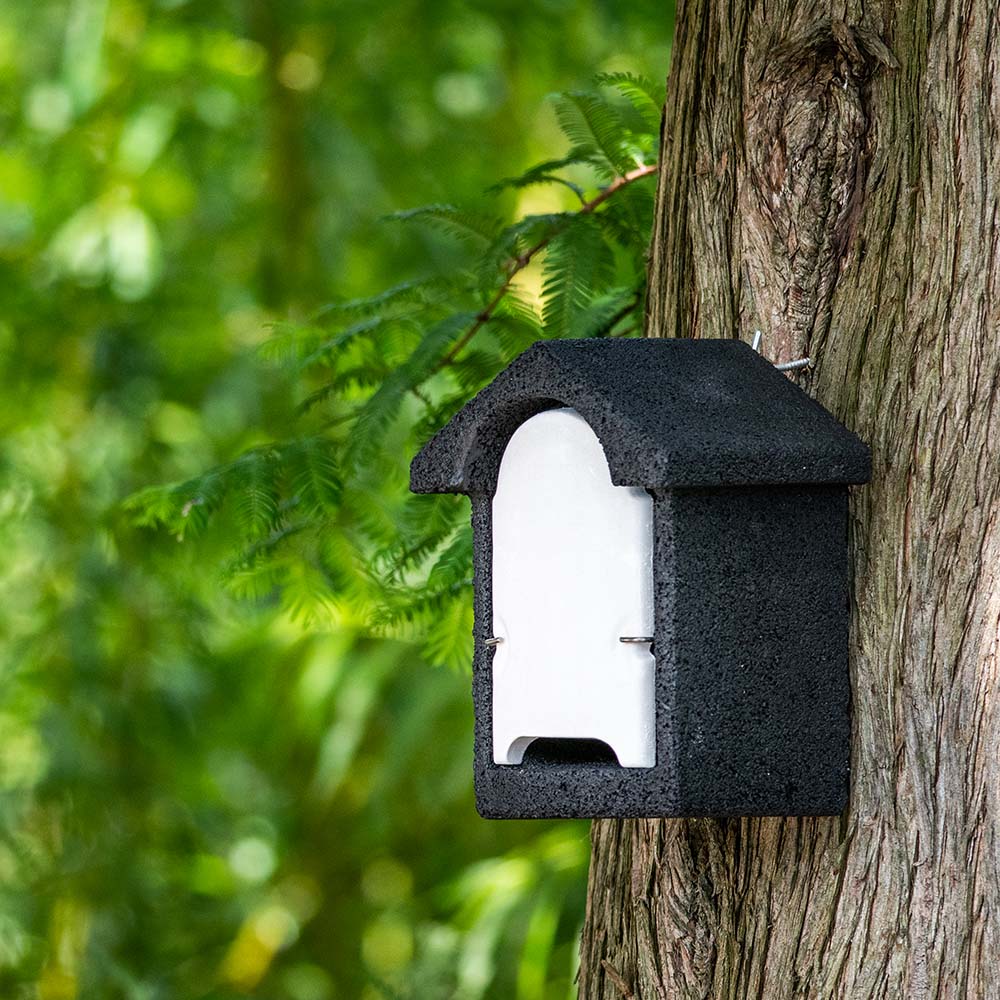Bat Boxes
At CJ Wildlife, we offer an extensive selection of high-quality bat boxes designed to provide essential shelter and support for bats in your garden or outdoor spaces. Read more here.
As a leading provider of wildlife care products, we understand the critical role bats play in the ecosystem and aim to help you create a safe, welcoming environment for these fascinating nocturnal creatures.
Why choose bat boxes?
Bat boxes are an effective way to support local bat populations, offering them a secure place to roost, breed, and hibernate. With natural habitats increasingly under threat, bat boxes can:
- Provide a safe haven from predators and harsh weather conditions.
- Encourage bats to thrive in your area, contributing to pest control as they feed on insects.
- Support biodiversity by attracting a unique and essential wildlife species.
By installing a bat box, you’ll not only enjoy the benefits of natural pest management but also play a part in conserving these important mammals.
Our range of bat boxes
Our carefully designed bat boxes cater to various species and needs, ensuring you find the perfect solution for your outdoor space. Explore our selection:
Classic wooden bat boxes
Crafted from wood, these durable and eco-friendly bat boxes blend seamlessly into natural surroundings. Ideal for gardens and wooded areas, they provide excellent insulation and protection for bats year-round.
WoodStone bat boxes
Our WoodStone bat boxes are crafted from a durable wood-concrete blend, offering exceptional longevity and insulation. These boxes are highly resistant to weather and wear, making them an ideal choice for long-term bat conservation. Designed to mimic natural roosting conditions, WoodStone boxes are suitable for various bat species and provide optimal shelter throughout the year.
Ideal for supporting larger colonies: Integrate multiple bat boxes in your outdoor space and offer places for roosting. Their innovative designs ensure optimal temperature regulation and protection from the elements.
Benefits of CJ Wildlife bat boxes
When you choose CJ Wildlife, you’re investing in products that stand out for their quality and sustainability. Our bat boxes offer:
- Superior craftsmanship: Built with attention to detail, ensuring durability and comfort for bats.
- Eco-friendly materials: Made from sustainably sourced wood and other environmentally responsible materials.
- Easy installation: Designed for straightforward mounting on trees, walls, or buildings.
Additionally, all our bat boxes are developed with input from wildlife experts to ensure they meet the needs of various bat species.
Tips for installing and maintaining bat boxes
Make the most of your bat box with these helpful tips:
- Placement: Install your bat box at least 3-5 meters above the ground in a sunny spot, ideally facing south or southeast to maximize warmth.
- Avoid disturbance: Choose a quiet location away from artificial lights and frequent human activity.
- Regular checks: Inspect the box periodically for signs of wear or damage, but avoid disturbing bats during their roosting season.
Shop bat boxes today
Enhance your garden’s biodiversity with our expertly crafted bat boxes. Whether you’re looking to support local wildlife or simply enjoy the benefits of having bats nearby, CJ Wildlife has the perfect solution for you.
Browse our collection now and join thousands of satisfied customers who trust us to bring wildlife closer to their homes.

















